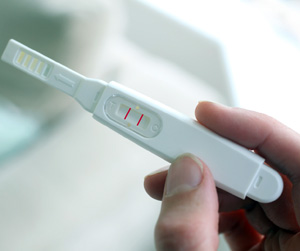Abortions The Facts
Abortions
 There are some types of abortions that can be performed with minimal amounts of discomfort to the mother, while others require that the mother receive a local anesthetic before the abortion is performed. Abortions can be done as soon as the mother discovers she is pregnant right through until the fetus is full term. However, the longer a mother waits to have an abortion, the higher her risks for complications and infection.
There are some types of abortions that can be performed with minimal amounts of discomfort to the mother, while others require that the mother receive a local anesthetic before the abortion is performed. Abortions can be done as soon as the mother discovers she is pregnant right through until the fetus is full term. However, the longer a mother waits to have an abortion, the higher her risks for complications and infection.
Procedure for abortions
 There are different types of ways to end an unwanted pregnancy; some can be performed with the minimal amount of discomfort. Some other types of abortions require the mother to receive a local anesthetic whilst the abortion is performed. Abortions sometimes referred to doctors as termination of pregnancy, could be performed in the U.K up until 24 weeks, although some clinics and doctors may not consider this from 18-20 weeks. The type of termination is usually determined by a doctor, his decision will be based on the term of the pregnancy. If the termination is carried out earlier in the term of the pregnancy, the less likely complications will arise.
There are different types of ways to end an unwanted pregnancy; some can be performed with the minimal amount of discomfort. Some other types of abortions require the mother to receive a local anesthetic whilst the abortion is performed. Abortions sometimes referred to doctors as termination of pregnancy, could be performed in the U.K up until 24 weeks, although some clinics and doctors may not consider this from 18-20 weeks. The type of termination is usually determined by a doctor, his decision will be based on the term of the pregnancy. If the termination is carried out earlier in the term of the pregnancy, the less likely complications will arise.
The most common abortions types:
Abortions Pill
An abortion pill, is a type of abortion known as non-surgical abortions, this is for women in the very early stages of pregnancy up to about nine weeks old. The mother will be required to take two drugs 48 hours apart. Miferpristone stops the hormone progesterone, which is required to maintain the pregnancy. Because of this the uterine lining will begin to shed, the cervix then begins to soften and bleeding can occur. The second medication, misoprostol is taken, the uterus contracts and the pregnancy is usually expelled within six to eight hours. These have the effect of causing the womb to contract and shed the lining so that the embryo is lost through the vagina. This can be painful and some women feel sick or have vomiting and diarrhoea with these drugs. The positives to this method of abortions, it allows the woman some control when to take the second pill as long as it is in the time-frame allowing the woman to have a home abortion.
abortions -Manual Vacuum
 Manual vacuum aspiration, this is more commonly used after nine weeks of pregnancy. This procedure will be carried out in an operating theatre or a procedure room, an oral analgesic such as ibuprofen is taken. Before the procedure begins, local anesthetic will be injected into the cervix, the cervix will be gently stretched open with the use of dilators. The uterus is then emptied using an electric or manual vacuum. The procedure takes between 10-15 minutes. Recover time for this type of abortion is typically 30-45 minutes and no overnight stay is required.
Manual vacuum aspiration, this is more commonly used after nine weeks of pregnancy. This procedure will be carried out in an operating theatre or a procedure room, an oral analgesic such as ibuprofen is taken. Before the procedure begins, local anesthetic will be injected into the cervix, the cervix will be gently stretched open with the use of dilators. The uterus is then emptied using an electric or manual vacuum. The procedure takes between 10-15 minutes. Recover time for this type of abortion is typically 30-45 minutes and no overnight stay is required.
Induced Abortions
Induced abortion, this method is usually used for women in later stages of pregnancy. This is where labour is induced with drugs; sometimes more than one drug is used to induce labour. The drugs can be administered vaginally, injected into the uterus, or given through an intravenous line. The most commonly used drug is Prostaglandins, it causes the uterus to contract. Some other agents can be used, but are less common such as saline, urea or oxytocin. Labour usually occurs within 12 hours, the side affects experienced can be nausea, vomiting, and sometimes diarrhoea.
Partial Birth Abortions
Partial birth abortion, it a type of abortion performed in the later term of pregnancy usually 18 weeks upward. Remember the latest an abortion can be performed is 24 weeks, some doctors may refuse to carry out the procedure from 18 weeks. Partial birth abortion is sometimes referred to as intact dilate and extraction (D&X) Woman considering this method should be aware of the highly controversial nature of this procedure. The first step in this procedure involves administration of medication needed to make the cervix dilate; this may take a number of days. The physician will turn the fetus into a footing breach position. The fetus is drawn out feet first until just the head remains inside the uterus, and then an instrument is used to puncture the base of the skull which collapses the fetal head. The contents of the fetal head are partially suctioned out; this reduces the size of the head to allow it to pass through the cervix. The intact fetus is then removed from the woman's body.
After the abortion woman experience different feelings, and will cope in different ways. Hormone levels can change resulting in mood swings; it is common for woman to feel a bit sensitive and irritable. Some woman may feel a sense of loss whether or not they believe their decision was right for them, other woman feel a sense of relief. Your doctor or clinic should offer the mother a choice of whether they want counseling after having abortions.
|